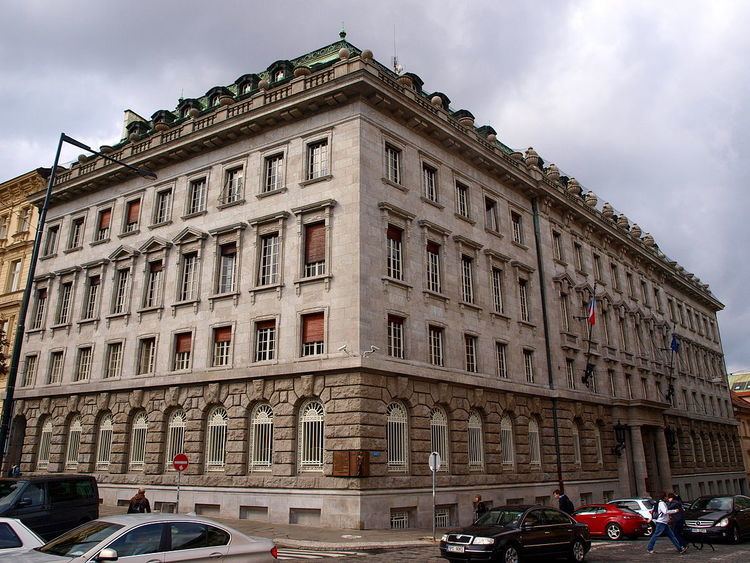 | ||
Address Politických vězňů 931/20, 110 00 Praha 1-Nové Město, Czechia Similar Palazzo dei granduch, Schebek Palace, Lannův palác, Millesimovský palác, Archbishop's Palace | ||
Petschek palace top 9 facts
The Petschek Palace (in Czech Petschkův palác or Pečkárna) is a neoclassicist building in Prague. It was built between 1923 and 1929 by the architect Max Spielmann upon a request from the merchant banker Julius Petschek and was originally called "The Bank House Petschek and Co." (Bankhaus Petschek & Co.) Despite its historicizing look, the building was then a very modern one, being constructed of reinforced concrete and fully air-conditioned. It also had tube post, phone switch-board, printing office, a paternoster lift (which is still functioning), and massive safes in the sublevel floor. The building was sold by the Petschek family before the occupation of Czechoslovakia, and the family left the country.
It was during the war years that the place gained its notoriety, as it immediately became the headquarters of Gestapo for the Protectorate of Bohemia and Moravia. It was here where the interrogations and torturing of the Czech resistance members took place, as well as the courts-martial established by Reinhard Heydrich which sent most of the prisoners to death or to Nazi concentration camps. Many people were put to death in the building itself. A Blue plaque that commemorates the spirit of these war heroes was unveiled on the corner of the building.
In 1948 the building was acquired by the then-Czechoslovak Ministry of Foreign Trade. Today it is the residence of a part of the Czech Ministry of Industry and Trade. In 1989 the building became a National Cultural Monument (Národní kulturní památka).
